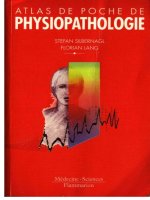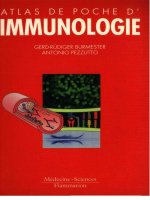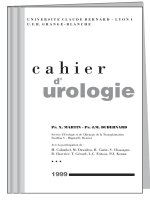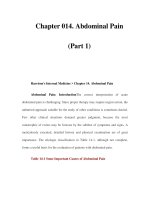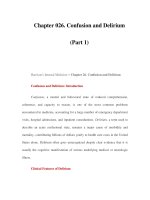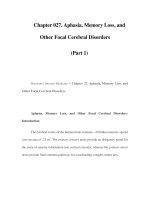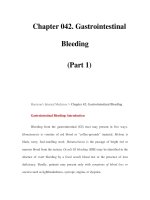Applied Surgical Physiology Vivas - part 1 pdf
Bạn đang xem bản rút gọn của tài liệu. Xem và tải ngay bản đầy đủ của tài liệu tại đây (368.12 KB, 19 trang )
Applied Surgical Physiology
Vivas
Applied Surgical Physiology Vivas
Mazyar Kanani BSc (Hons) MBBS (Hons) MRCS (Eng)
British Heart Foundation
Paediatric Cardiothoracic Clinical Research Fellow
Cardiac Unit
Great Ormond Street Hospital for Children
London, UK
Martin Elliott MD FRCS
Consultant Cardiothoracic Surgeon
Chief of Cardiothoracic Surgery
Director of Transplantation and Tracheal Services
Great Ormond Street Hospital for Children
London, UK
Cambridge, New York, Melbourne, Madrid, Cape Town, Singapore, São Paulo
Cambridge University Press
The Edinburgh Building, Cambridge , UK
Published in the United States of America by Cambridge University Press, New York
www.cambridge.org
Information on this title: www.cambridge.org/9780521683203
© Greenwich Medical Media Limited 2004
This publication is in copyright. Subject to statutory exception and to the provision of
relevant collective licensing agreements, no reproduction of any part may take place
without the written permission of Cambridge University Press.
First published in print format 2005
-
-
---- eBook (NetLibrary)
--- eBook (NetLibrary)
-
-
---- paperback
--- paperback
Cambridge University Press has no responsibility for the persistence or accuracy of s
for external or third-party internet websites referred to in this publication, and does not
guarantee that any content on such websites is, or will remain, accurate or appropriate.
APPLIED SURGICAL PHYSIOLOGY VIVAS
CONTENTS
vii
xi
A Change in Posture
Acid-Base
Action Potentials
Adrenal Cortex I
Adrenal Cortex II – Clinical Disorders
Adrenal Medulla
Arterial Pressure
Autonomic Nervous System (ANS)
1
4
8
13
16
19
23
25
Carbon Dioxide Transport
Cardiac Cycle
Cardiac Output (CO)
Cell Signalling
Cerebrospinal Fluid (CSF) and Cerebral Blood Flow
Colon
Control of Ventilation
Coronary Circulation
29
33
37
40
44
47
50
55
Fetal Circulation
59
Glomerular Filtration and Renal Clearance
61
Immobilization
65
Liver
67
Mechanics of Breathing I – Ventilation
Mechanics of Breathing II – Respiratory Cycle
Mechanics of Breathing III – Compliance and Elastance
Mechanics of Breathing IV – Airway Resistance
Microcirculation I
71
73
76
80
84
᭢
CONTENTS
List of Abbreviations
Preface
v
APPLIED SURGICAL PHYSIOLOGY VIVAS
108
Pancreas I – Endocrine Functions
Pancreas II – Exocrine Functions
Potassium Balance
Proximal Tubule and Loop of Henle
Pulmonary Blood Flow
111
115
119
121
125
Renal Blood Flow (RBF)
Respiratory Function Tests
130
133
Small Intestine
Sodium Balance
Sodium and Water Balance
Starvation
Stomach I
Stomach II – Applied Physiology
Swallowing
Synapses I – The Neuromuscular Junction (NMJ)
Synapses II – Muscarinic Pharmacology
Synapses III – Nicotinic Pharmacology
137
139
141
145
148
152
155
158
161
164
Thyroid Gland
167
Valsalva Manoeuvre
Venous Pressure
Ventilation/Perfusion Relationships
vi
87
89
92
97
102
Nutrition: Basic Concepts
CONTENTS
Microcirculation II
Micturition
Motor Control
Muscle I – Skeletal and Smooth Muscle
Muscle II – Cardiac Muscle
170
172
174
APPLIED SURGICAL PHYSIOLOGY VIVAS
LIST OF ABBREVIATIONS
Acetylcholine
Acetylcholinesterase
Adrenocorticotrophic hormone
Antidiuretic hormone
Adenosine diphosphate
Alanine aminotransferase
Atrial natriuretic peptide
Autonomic nervous system
Activated partial thromboplastin time
Adult respiratory distress syndrome
Aspartate aminotransferase
Adenosine triphosphate
Atrioventricular
Arginine vasopressin
Blood-brain barrier
Basal metabolic rate
Blood pressure
Cyclic adenosine monophosphate
Choline acetyl transferase
Coronary blood flow
Cholecystokinin
Cyclic guanosine monophosphate
Central nervous system
Cardiac output
Chronic obstructive pulmonary disease
Continuous positive airway pressure
Chemoreceptor trigger zone
Cerebrospinal fluid
Central venous pressure
Diacylglycerol
Distal convoluted tubule
Dehydroepiandrosterone
Dihydroxyphenylalanine
Extracellular fluid
LIST OF ABBREVIATIONS
ACh
AChE
ACTH
ADH
ADP
ALT
ANP
ANS
APTT
ARDS
AST
ATP
AV
AVP
BBB
BMR
BP
cAMP
CAT
CBF
CCK
cGMP
CNS
CO
COPD
CPAP
CRTZ
CSF
CVP
DAG
DCT
DHEA
DOPA
ECF
᭢
vii
APPLIED SURGICAL PHYSIOLOGY VIVAS
LIST OF ABBREVIATIONS
viii
ECG/EKG
EGF
EPSP
ERV
FiO2
FEV
FFA
FRC
FVC
GDP
GFR
GTP
HCT
IC
ICF
IP2
IP3
IPSP
IRV
IVC
MAP
MEN
MI
NMJ
NO
PAH
PAP
PCT
PDGF
PNS
PT
PVR
R-A-A
RBF
RES
RPF
᭢
Electrocardiogram
Epidermal growth factor
Excitatory postsynaptic potential
Expiratory reserve volume
Fraction of inspired oxygen
Forced expiratory volume
Free fatty acid
Functional residual capacity
Force vital capacity
Guanosine diphosphate
Glomerular filtration rate
Guanosine triphosphate
Haematocrit
Inspiratory capacity
Intracellular fluid
Inositol diphosphate
Inositol triphosphate
Inhibitory postsynaptic potential
Inspiratory reserve volume
Inferior vena cava
Mean arterial pressure
Multiple endocrine neoplasia
Myocardial infarction
Neuromuscular junction
Nitric oxide
Para-aminohippuric acid
Pulmonary artery pressure
Proximal convoluted tubule
Platelet-derived growth factor
Parasympathetic nervous system
Prothrombin time
Pulmonary vascular resistance
Renin-angiotensin-aldosterone
Renal blood flow
Reticuloendothelial system
Renal plasma flow
APPLIED SURGICAL PHYSIOLOGY VIVAS
Residual volume
Sinoatrial
Syndrome of inappropriate ADH
Systemic lupus erythematosus
Sympathetic nervous system
Sarcoplasmic reticulum
Systemic vascular resistance
Tricarboxylic acid
Total lung capacity
Total lung volume
Thyroid-stimulating hormone
Tidal volume
Vital capacity
Ventilation/perfusion ratio
LIST OF ABBREVIATIONS
RV
SA
SIADH
SLE
SNS
SR
SVR
TCA
TLC
TLV
TSH
TV
VC
V/Q
ix
To my daughter, Edel Roya Kanani
APPLIED SURGICAL PHYSIOLOGY VIVAS
PREFACE
A well-known doctor once told me that “learning is the
noblest form of begging”. This is certainly what it feels like
just before the MRCS exam when the brain labours with the
weight of temporary information. Physiology is not an inherently difficult subject – only made so by the unholy trinity of
a bad night on-call, dwindling time and a thick textbook.
I hope that this book is the remedy to this unfortunate combination, and helps a little to play the game.
M.K
M.J.E
January 2004
PREFACE
xi
APPLIED SURGICAL PHYSIOLOGY VIVAS
A CHANGE IN POSTURE
Below is a set of graphs showing some cardiovascular
parameters during a change in posture from supine to
standing, and then to supine again.
Supine
Heart
rate
(beats/min)
Relative
cardiac
output
(ratio)
Supine
100
60
A CHANGE IN POSTURE
Relative
stroke
volume
(ratio)
Standing
A
1.0
0.6
1.0
0.8
Systolic
Blood
pressure
(mmHg)
120
80
Diastolic
Relative
total
peripheral
resistance
(ratio)
1.4
1.2
1.0
0
10
20
30
40
Time (min)
From Smith J, Bush J, Weidmeier V and Tristani. Application of
impedance cardiography to study of postural stress. Journal of
Applied Physiology, 29:133. The American Physiological Society, 1970
1. What happens to the stroke volume when standing
up after a period of lying supine? Explain why this
change occurs
Standing up increases the venous pooling of blood in
the most dependent parts of the body. (Veins are, after
᭢
1
APPLIED SURGICAL PHYSIOLOGY VIVAS
A
all, capacitance vessels.) This redistribution of blood
causes a reduction in the intrathoracic blood volume
returning to the heart. Through the Frank-Starling
mechanism, this causes a reduction in the stroke volume
(by 30–40%). This rises again when going back to the
supine position, in response to increased venous return.
A CHANGE IN POSTURE
2. What happens to the arterial pressure during this
period?
Despite changes in the physiologic environment and
stroke volume, reflex responses ensure that there is
little change in the arterial pressure.
3. What is the physiologic relationship between the
cardiac output (CO) and the arterial pressure
normally?
The arterial pressure is defined as the product of the
CO and the systemic vascular resistance (SVR) and may
be considered as the afterload. An increase of this places
a negative feedback on any further rise in the CO.
4. What physiologic mechanisms ensure that the
arterial pressure is maintained after standing?
The changes that occur may be understood by
considering the relationship of the arterial pressure to
the heart rate and SVR.
Arterial pressure ϭ CO ϫ SVR
where CO ϭ heart rate ϫ stroke volume
∴ Arterial pressure ϭ heart rate ϫ stroke volume ϫ
SVR
There is a fall in the stroke volume, so in order to maintain the blood pressure (BP), the heart rate and the SVR
must increase
᭹ Carotid baroreceptor stimulation is reduced
following a fall in the pulse pressure on standing.
2
᭢
APPLIED SURGICAL PHYSIOLOGY VIVAS
᭹
᭹
᭹
᭹
5. Give some common causes for postural hypotension.
Failure to increase the CO during standing
Simple vaso-vagal syncope
Fixed heart rate or bradycardia: -blockers,
heart block, sick sinus syndrome
Myocardial diseases: cardiomyopathy, other
cardiac failure
᭹ Reduced stroke volume
Fixed afterload: aortic stenosis, pulmonary
embolism
Dehydration, diuretics
᭹ Reduced SVR
Vasodilator drugs, e.g. ␣-blockers, nitrates,
antidepressants
Pregnancy
Sepsis
Autonomic failure, e.g. chronic diabetes mellitus
A
A CHANGE IN POSTURE
᭹
This causes a reduction of vagal cardiac stimulation,
and an increase in sympathetic nervous system
(SNS) stimulation of the heart and peripheral
vasculature
There is, therefore, an increase in the heart rate by
15–20 beats per minute
Increased peripheral SNS activity stimulates
arteriolar vasoconstriction – increasing the SVR
There is also some venoconstriction, limiting the
amount of peripheral blood pooling
There is a sympathetically-mediated inotropic
effect on the myocardium, limiting the fall in the
stroke volume and CO
As a result of increases in the heart rate and SVR,
the arterial pressure may actually rise slightly on
standing
᭹
3
APPLIED SURGICAL PHYSIOLOGY VIVAS
A
ACID-BASE
1. Define the pH.
The pH is Ϫlog10 [Hϩ].
2. What is the pH of the blood?
7.36–7.44.
3. Where does the H؉ in the body come from?
Most of the Hϩ in the body comes from CO2 generated
by metabolism. This enters solution, forming carbonic
acid through a reaction mediated by the enzyme carbonic anhydrase.
ACID -BASE
CO2 ϩ H2O S H2CO3 S H+ ϩ HCOϪ
3
Acid is also generated by
Metabolism of the sulphur-containing amino acids
cysteine and methionine
᭹ Anaerobic metabolism, generating lactic acid
᭹ Generation of the ketone bodies: acetone,
acetoacetate and -hydroxybutyrate
᭹
4. What are the main buffer systems in the intravascular,
interstitial and intracellular compartments?
In the plasma the main systems are:
The bicarbonate system
2Ϫ
Ϫ
The phosphate system (HPO4 ϩ Hϩ S H2PO4 )
᭹ Plasma proteins
᭹ Globin component of haemoglobin
Interstitial: the bicarbonate system
Intracellular: cytoplasmic proteins.
᭹
᭹
5. What does the Henderson–Hasselbalch equation
describe, and how is it derived?
This equation, which may be applied to any buffer system, defines the relationship between dissociated and
4
᭢
APPLIED SURGICAL PHYSIOLOGY VIVAS
undissociated acids and bases. It is used mainly to
describe the equilibrium of the bicarbonate system.
A
CO2 ϩ H2O S H2CO3 S H+ ϩ HCOϪ
3
The dissociation constant,
Kϭ
[Hϩ ][HCOϪ ]
3
[H2CO3 ]
Therefore
[Hϩ ]ϭ K
ACID -BASE
[H2CO3 ]
[HCOϪ ]
3
Taking the log10
log10[Hϩ]ϭ log10 K ϩ log10
[H2CO3 ]
[HCOϪ]
3
Taking the negative log, which expresses the pH, and
where Ϫlog10K is the pK
pH ϭ pK Ϫlog10
[H2CO3 ]
[HCOϪ]
3
Invert the term to remove the minus sign:
pH ϭ pK ϩlog10
[HCOϪ]
3
[H2CO3 ]
The [H2CO3] may be expressed as pCO2 ϫ 0.23, where
0.23 is the solubility coefficient of CO2 (when the pCO2
is in kPa).
The pK is equal to 6.1.
᭢
5
APPLIED SURGICAL PHYSIOLOGY VIVAS
A
Thus,
pH ϭ 6.1 + log10
[HCOϪ]
3
.
pCO2 × 0.23
ACID -BASE
6. Which organ systems are involved in regulating
acid-base balance?
The main organ systems are:
᭹ Respiratory system: this controls the pCO through
2
alterations in the alveolar ventilation. Carbon
dioxide indirectly stimulates central chemoceptors
(found in the ventro-lateral surface of the medulla
oblongata) through Hϩ released when it crosses the
blood-brain barrier (BBB) and dissolves in the
cerebrospinal fluid (CSF)
᭹ Kidney: this controls the [HCO Ϫ], and is important
3
for long-term control and compensation of acid-base
disturbances
᭹ Blood: through buffering by plasma proteins and
haemoglobin
᭹ Bone: Hϩ may exchange with cations from bone
mineral. There is also carbonate in bone that can be
Ϫ
used to support plasma HCO3 levels
Ϫ
ϩ
᭹ Liver: this may generate HCO
3 and NH4 (ammonia)
by glutamine metabolism. In the kidney tubules,
ammonia excretion generates more bicarbonate
7. How does the kidney absorb bicarbonate?
There are three main methods by which the kidneys
increase the plasma bicarbonate:
᭹ Replacement of filtered bicarbonate with
bicarbonate that is generated in the tubular cells
᭹ Replacement of filtered phosphate with bicarbonate
that is generated in the tubular cells
᭹ By generation of ‘new’ bicarbonate from glutamine
molecules that are absorbed by the tubular cell
6
᭢
